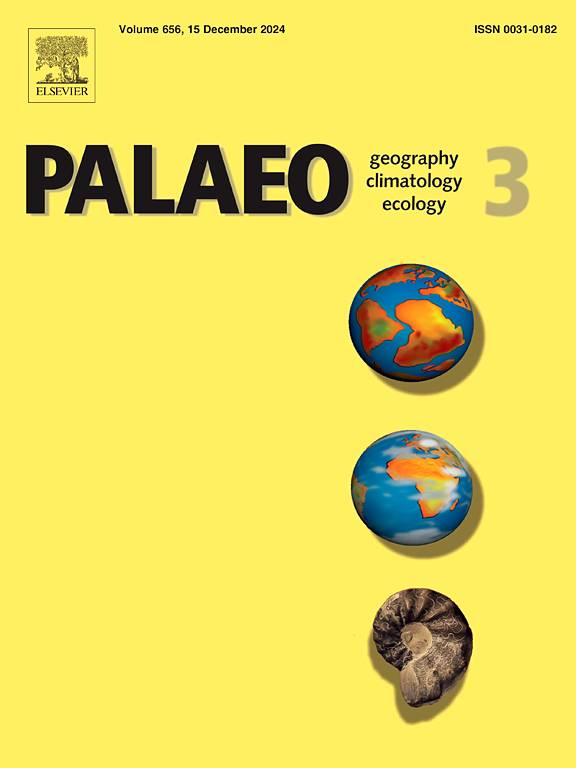Enhancing sustainability in early millet agriculture: Manuring practices in the Yellow River Valley
IF 2.7
2区 地球科学
Q2 GEOGRAPHY, PHYSICAL
Palaeogeography, Palaeoclimatology, Palaeoecology
Pub Date : 2025-09-10
DOI:10.1016/j.palaeo.2025.113283
引用次数: 0
Abstract
The implementation of various agricultural strategies, including manuring, has long been considered a key factor in supporting the complexity of early societies worldwide. The Yellow River valley in China is recognized as the cradle of millet agriculture and civilization state. However, systematic research on manuring practices within spatiotemporal archaeological contexts in early millet agriculture within this region remains scarce. This paper synthesizes previously published isotopic data from foxtail and broomcorn millet at 33 archaeological sites spanning the late Neolithic to the Bronze Age, aiming to clarify the characteristics of early millet manuring management and its role in the sustainable development of ancient China. Nitrogen isotope results, together with evidence from soil nutrients, livestock husbandry, and archaeobotanical findings, suggest that manuring had been widely adopted in the dryland agriculture of the Yellow River valley since the late Neolithic period. Faced with increasing population pressures and environmental limitations, farmers in the Yellow River valley maintained manuring practices for farmland while expanding cultivated areas, though the intensity exhibited significant spatiotemporal variations. The refinement of agricultural strategies not only promoted the sustainable development and regional expansion of agricultural production but also played a crucial role in shaping the enduring features and trajectory of Chinese civilization.
提高早期谷子农业的可持续性:黄河流域的施肥措施
长期以来,各种农业策略的实施,包括施肥,一直被认为是支持世界范围内早期社会复杂性的关键因素。黄河流域是中国公认的小米农业和文明的摇篮。然而,在该地区早期谷子农业的时空考古背景下,对施肥实践的系统研究仍然很少。本文综合了新石器时代晚期至青铜时代33个考古遗址的谷子和黍的同位素数据,旨在阐明早期谷子施肥管理的特征及其在中国古代可持续发展中的作用。氮同位素结果,连同来自土壤养分、畜牧业和考古植物学发现的证据表明,自新石器时代晚期以来,黄河流域的旱地农业就广泛采用了施肥。面对日益增长的人口压力和环境限制,黄河流域农民在扩大耕地面积的同时保持了对农田的施肥,但其强度表现出显著的时空差异。农业战略的精细化不仅促进了农业生产的可持续发展和区域扩张,而且对塑造中华文明的持久特征和轨迹起着至关重要的作用。
本文章由计算机程序翻译,如有差异,请以英文原文为准。
求助全文
约1分钟内获得全文
求助全文
来源期刊
CiteScore
5.90
自引率
10.00%
发文量
398
审稿时长
3.8 months
期刊介绍:
Palaeogeography, Palaeoclimatology, Palaeoecology is an international medium for the publication of high quality and multidisciplinary, original studies and comprehensive reviews in the field of palaeo-environmental geology. The journal aims at bringing together data with global implications from research in the many different disciplines involved in palaeo-environmental investigations.
By cutting across the boundaries of established sciences, it provides an interdisciplinary forum where issues of general interest can be discussed.

 求助内容:
求助内容: 应助结果提醒方式:
应助结果提醒方式:


